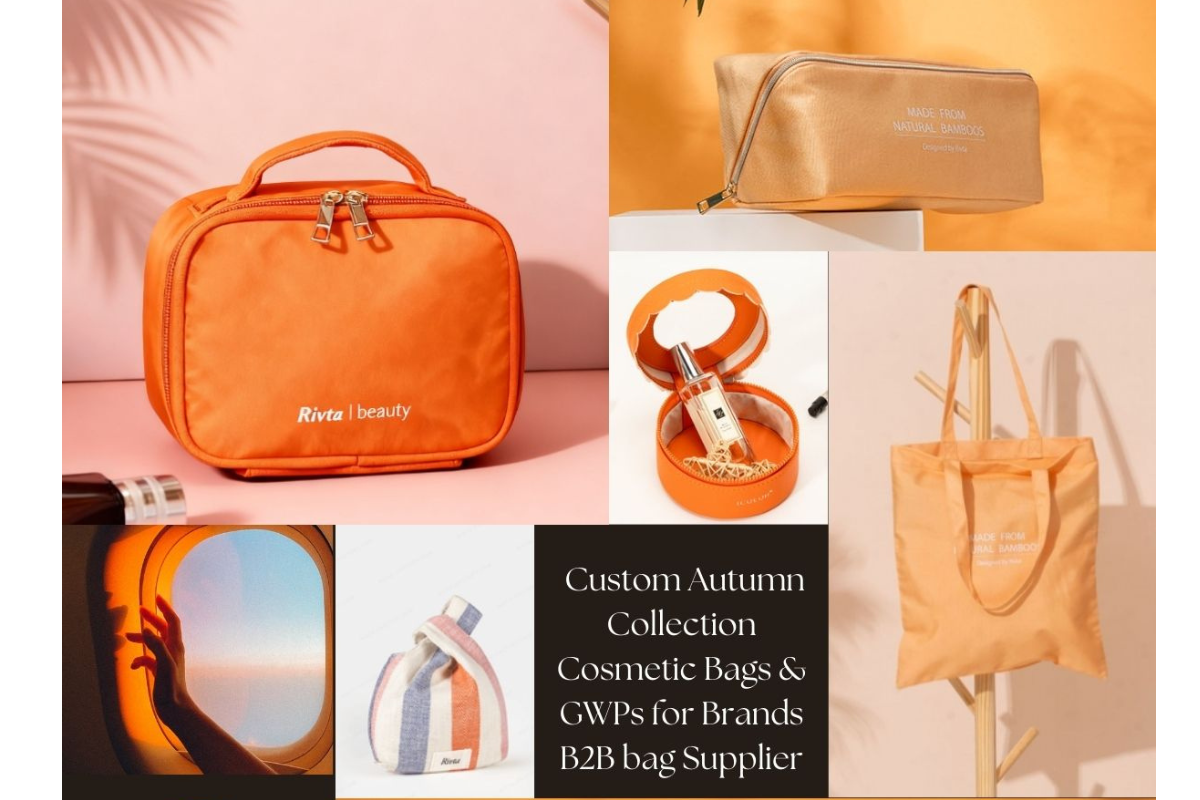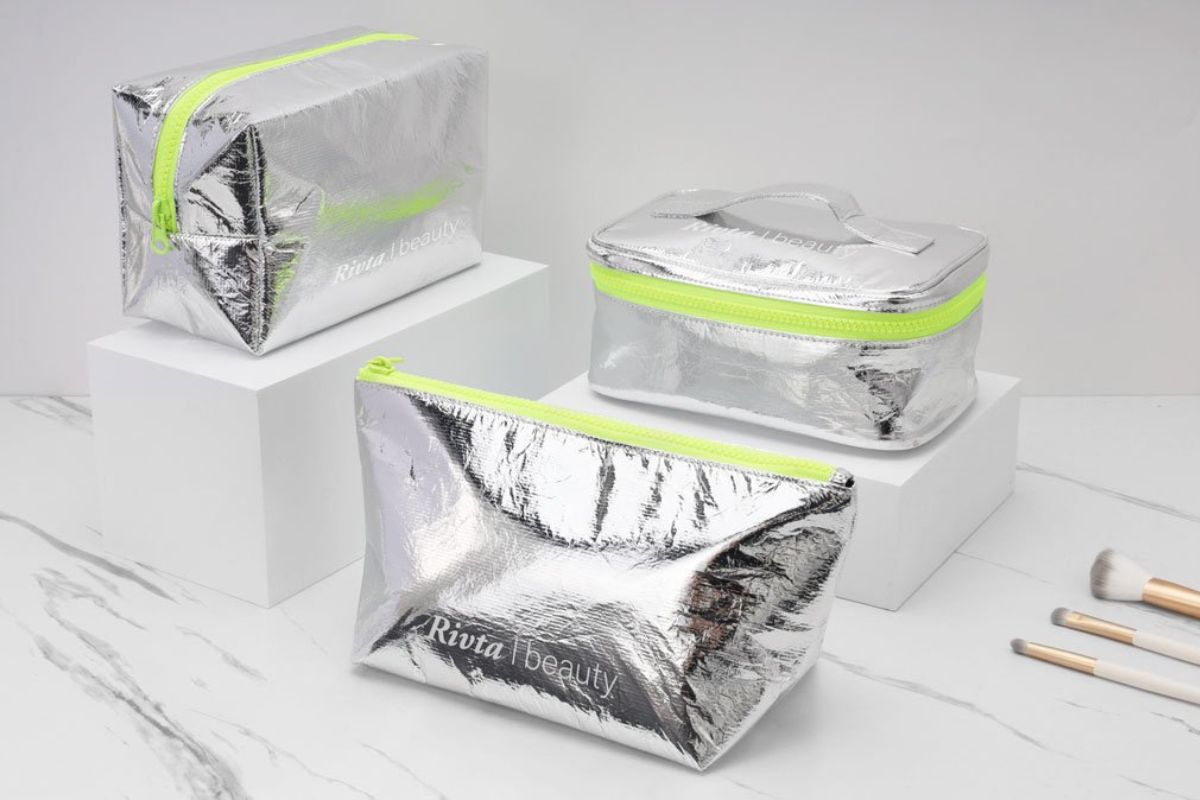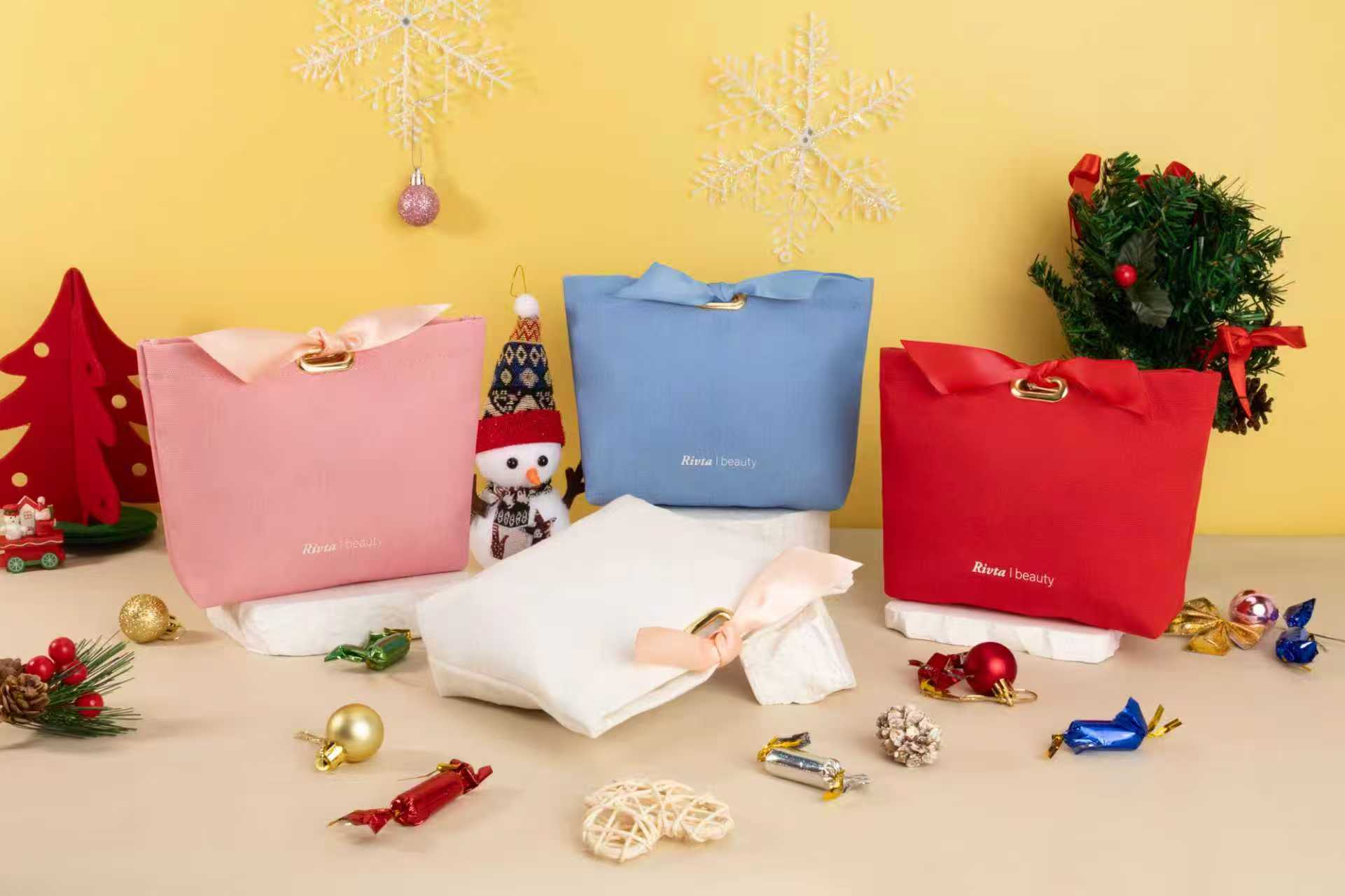How to Customize Toiletry Bags in Bulk: A Buyer's Guide?
You need custom toiletry bags for your brand, but the process seems overwhelming. You're worried about making the wrong choices in design, materials, or branding, leading to a product that doesn't sell.
Customizing toiletry bags in bulk involves a four-step process: choosing the right logo application, selecting the best material for your brand, deciding on quality hardware, and designing a functional interior. Each step is a chance to infuse your brand's identity into the final product.
Creating a custom bag is like telling a story about your brand without words. Every choice, from the fabric's texture to the zipper's sound, sends a message. I've guided hundreds of brand owners through this journey since 1990. I remember working with Alisa, an Australian skincare founder. With her background in interior design, she understood that true luxury is in the details. She didn't just want a bag; she wanted a functional piece of art that her customers would cherish. She wanted it to match the sustainable, high-end ethos of her products. This guide breaks down the customization process into clear, manageable steps, just as I did for her, so you can create a toiletry bag that perfectly represents your brand.
Step 1: Making your mark - a deep dive into logo customization?
You have a great logo, but you don't know the best way to apply it to a bag. You are afraid of choosing a method that looks cheap, peels off, or doesn't match your brand's premium image.
The best logo customization method depends on your logo's design, your chosen material, and your brand's aesthetic. Options range from cost-effective silk-screen printing for bold graphics to elegant debossing for a subtle, high-end finish.
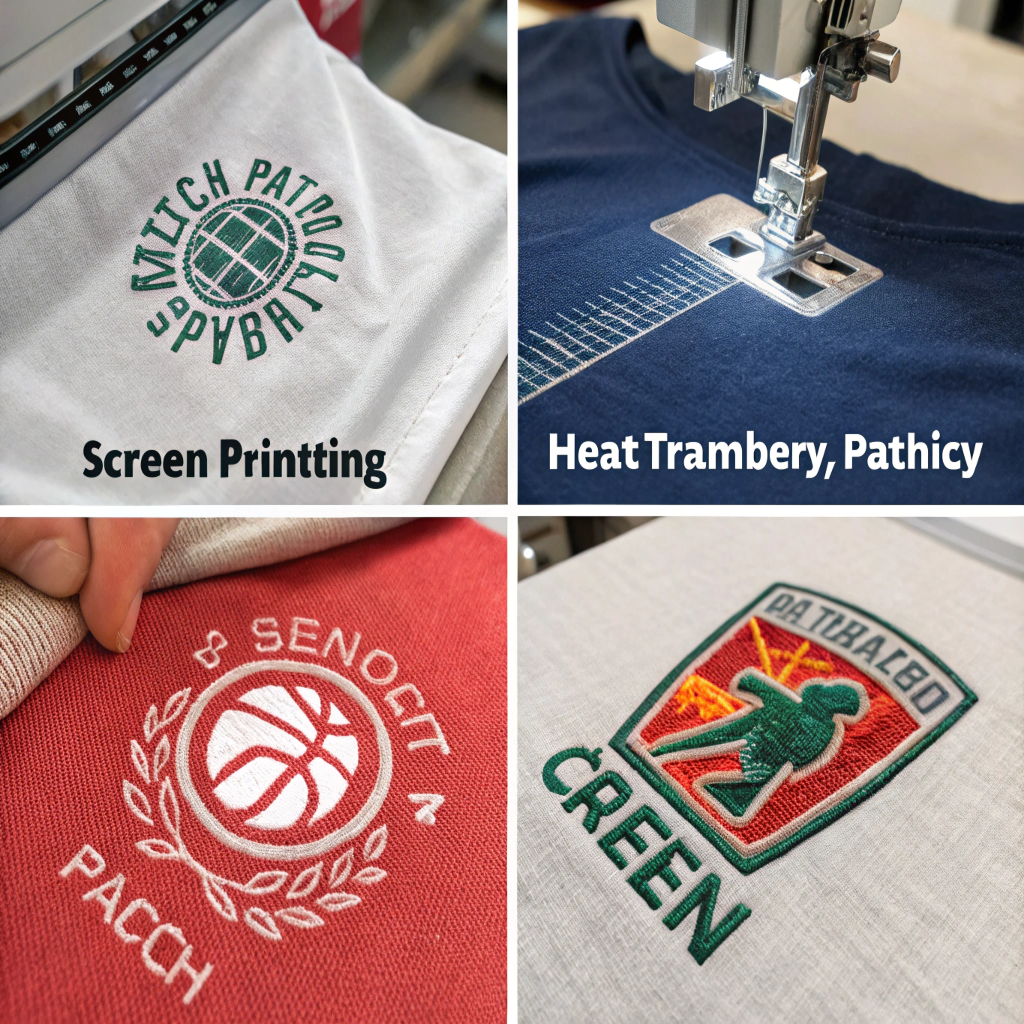
Your logo is your brand's signature, and how it's applied is a critical decision. It's the first thing your customer will see. You need a method that is not only beautiful but also durable. There is no single "best" method; the right choice is about matching the technique to your specific project. For example, a brand with a simple, one-color wordmark might find silk-screen printing to be perfect, while a luxury brand might prefer the understated look of a debossed logo on a PU leather patch. We need to consider the material of the bag, the complexity of your artwork, and the overall feeling you want to convey.
Silk Screen Printing: Best for Bold, Simple Graphics
This is a classic and reliable method. We create a stencil of your design and push ink through it directly onto the fabric. It's highly durable and cost-effective, especially for larger orders with one or two solid colors. It works great on materials like canvas, cotton, and polyester.
Heat Transfer: Ideal for Full-Color and Complex Designs
If your logo has multiple colors, gradients, or photo-like details, heat transfer is the way to go. Your design is printed onto a special paper and then thermally transferred to the bag. It allows for vibrant, full-color reproduction that screen printing can't achieve.
Embroidery: For a Premium, Textured Finish
Embroidery involves stitching your logo directly onto the bag. It creates a raised, textured, and incredibly premium feel. It's often chosen for high-end corporate gifts or retail products on fabrics like canvas or twill. It adds tangible quality and has a classic, sophisticated look.
Debossing & Embossing: Understated Elegance for PU and Leather
This technique uses a metal die to press your logo into the material, creating an indented (debossed) or raised (embossed) effect. It's inkless, subtle, and screams luxury. This is the perfect option for PU leather or genuine leather bags and is a favorite among minimalist, high-end brands.
| Technique | Best For | Materials | Feel & Look |
|---|---|---|---|
| Silk Screen | 1-2 color solid logos | Canvas, Polyester, Cotton | Flat, smooth, durable |
| Heat Transfer | Full-color, photo graphics | Polyester, smooth fabrics | Smooth, vibrant, detailed |
| Embroidery | Premium branding | Canvas, Heavy Cotton, Twill | Textured, raised, classic |
| Debossing | Subtle luxury logos | PU Leather, Genuine Leather | Indented, tonal, elegant |
Step 2: The foundation - choosing the right material for your bag?
You know you need a durable material, but the options seem endless. Selecting the wrong fabric can lead to a bag that doesn't match your brand's quality, price point, or sustainability goals.
Choosing the right material is the foundation of your bag's design. The choice between canvas, polyester, nylon, or eco-friendly options like RPET directly impacts the bag's durability, feel, and alignment with your brand's values.
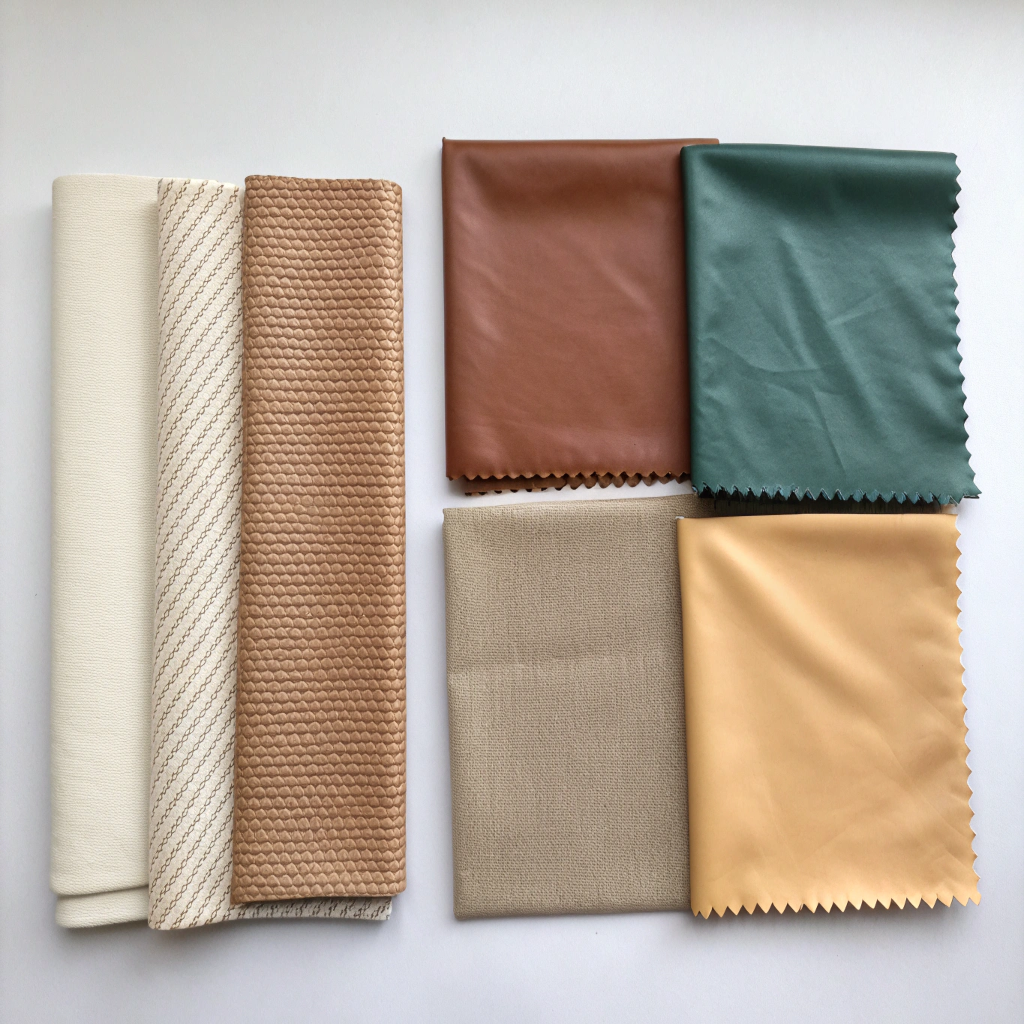
The material is the body and soul of your toiletry bag. It determines how the bag looks, feels, and performs over time. When Alisa was designing her bag, we spent a lot of time on this step. She needed a material that was not only aesthetically pleasing but also waterproof and, most importantly, sustainable. The material you choose sends a clear message to your customer. A heavy cotton canvas might suggest a natural, earthy brand. A sleek nylon might be for a modern, travel-focused brand. A recycled PET (RPET) fabric tells a story of environmental responsibility. At Rivta, our "Green Mission" means we always encourage clients to consider sustainable options. We can source recycled cotton, organic canvas, or RPET made from plastic bottles, helping your product align with the values of the modern, conscious consumer.
Step 3: The finishing touches - why hardware matters more than you think?
You've focused on the fabric and logo but overlooked the smaller components. You worry that a cheap zipper or a flimsy puller will break, frustrating your customers and making your brand look bad.
Hardware like zippers and pullers are critical touchpoints that define the user's experience and perceived value of your bag. High-quality metal zippers and custom-molded pullers can elevate a simple bag into a premium product.
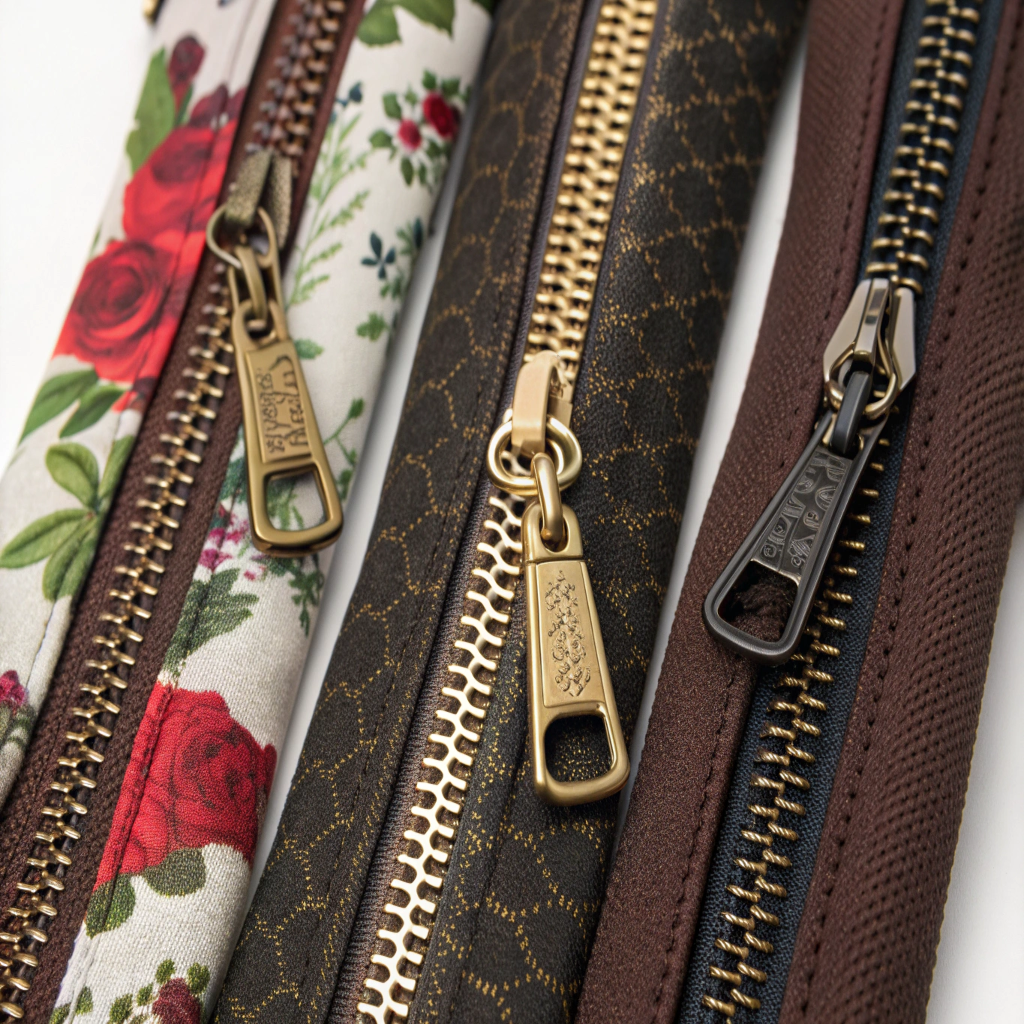
Hardware is where your customer physically interacts with your product every single day. A smooth, sturdy zipper feels reliable. A custom puller with your logo on it is a detail they will notice. Conversely, a zipper that snags or breaks is often the first point of failure on a bag and a fast way to disappoint a customer. This is why we treat hardware with the same importance as the main fabric. The options go far beyond the standard. You can choose from different zipper types, like nylon for smooth operation or a chunkier metal zipper for a vintage look. The finish matters, too. Do you want polished silver, antique brass, or a modern matte black? For Alisa’s brand, we settled on a matte black metal zipper to match her minimalist aesthetic. We even created a custom-molded puller from a zinc alloy, giving the bag a satisfying weight and a unique tactile element that reinforced its premium quality.
Step 4: Designing for functionality - customizing the internal structure?
Your bag looks great on the outside, but is it useful on the inside? You are concerned that a poorly designed interior with no organization will fail to meet your customers' practical needs.
A great toiletry bag is defined by its internal functionality. Customizing the interior with features like waterproof lining, mesh pockets, elastic loops, and zippered compartments transforms it from a simple pouch into a highly practical travel organizer.
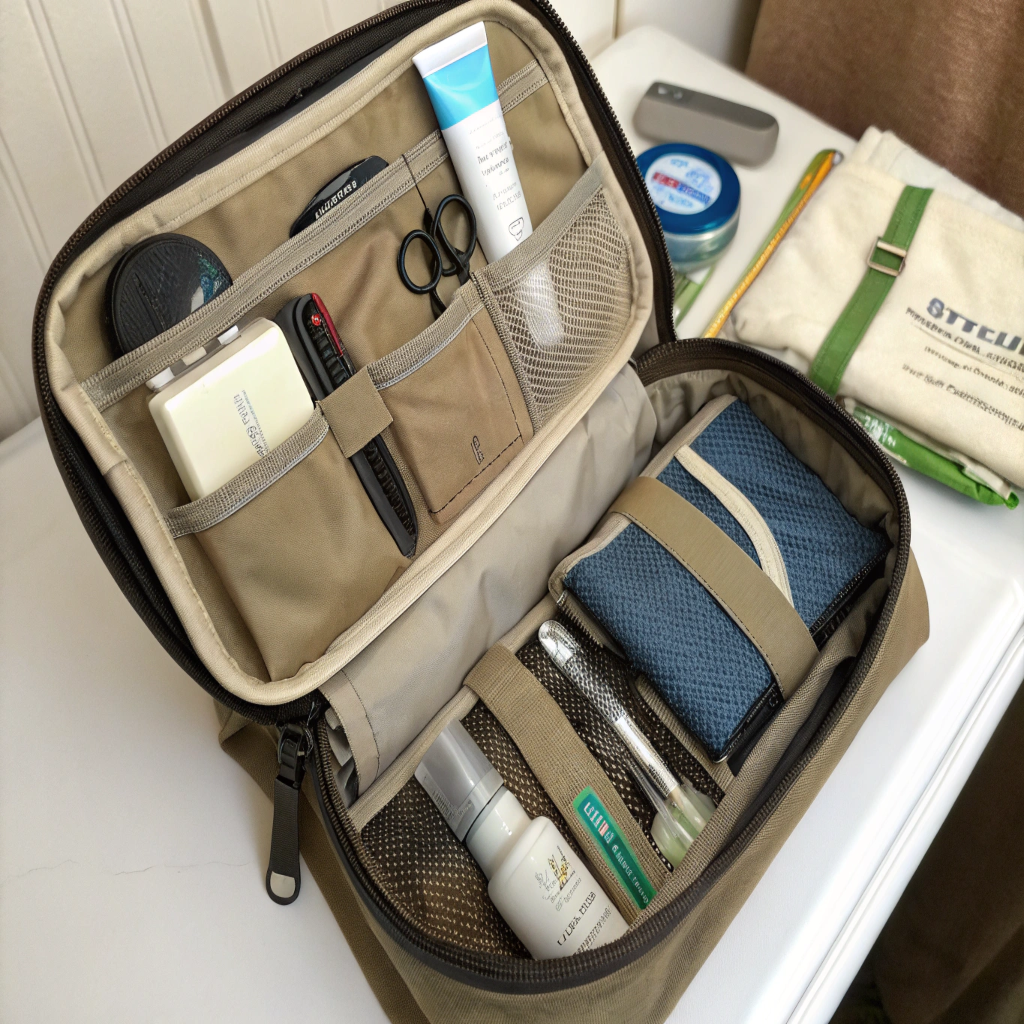
True value comes from a design that solves a problem for the user. A toiletry bag's job is to keep items organized, accessible, and safe from spills. A beautiful bag that is just an empty sack inside is a missed opportunity. We work with brands to think about the end-user. Who are they and what are they carrying? For a skincare brand, a waterproof lining is non-negotiable to contain potential leaks. Mesh pockets are great because they allow users to see what's inside without rummaging. Elastic loops are perfect for holding makeup brushes, razors, or toothbrushes securely in place. We can add zippered pockets for smaller items or even padded dividers for more delicate products. This customization of the internal structure is what makes a customer love using your bag, not just owning it.
Case Study: Bringing a custom toiletry bag from concept to reality?
These steps sound good in theory, but how do they work in a real project? You want to see how these decisions come together to create a final, successful product for a real brand.
This case study shows how Australian brand founder Alisa used this four-step process. She chose sustainable RPET material, an elegant debossed logo, premium matte hardware, and a functional interior with waterproof lining, creating a bag that perfectly matched her brand.
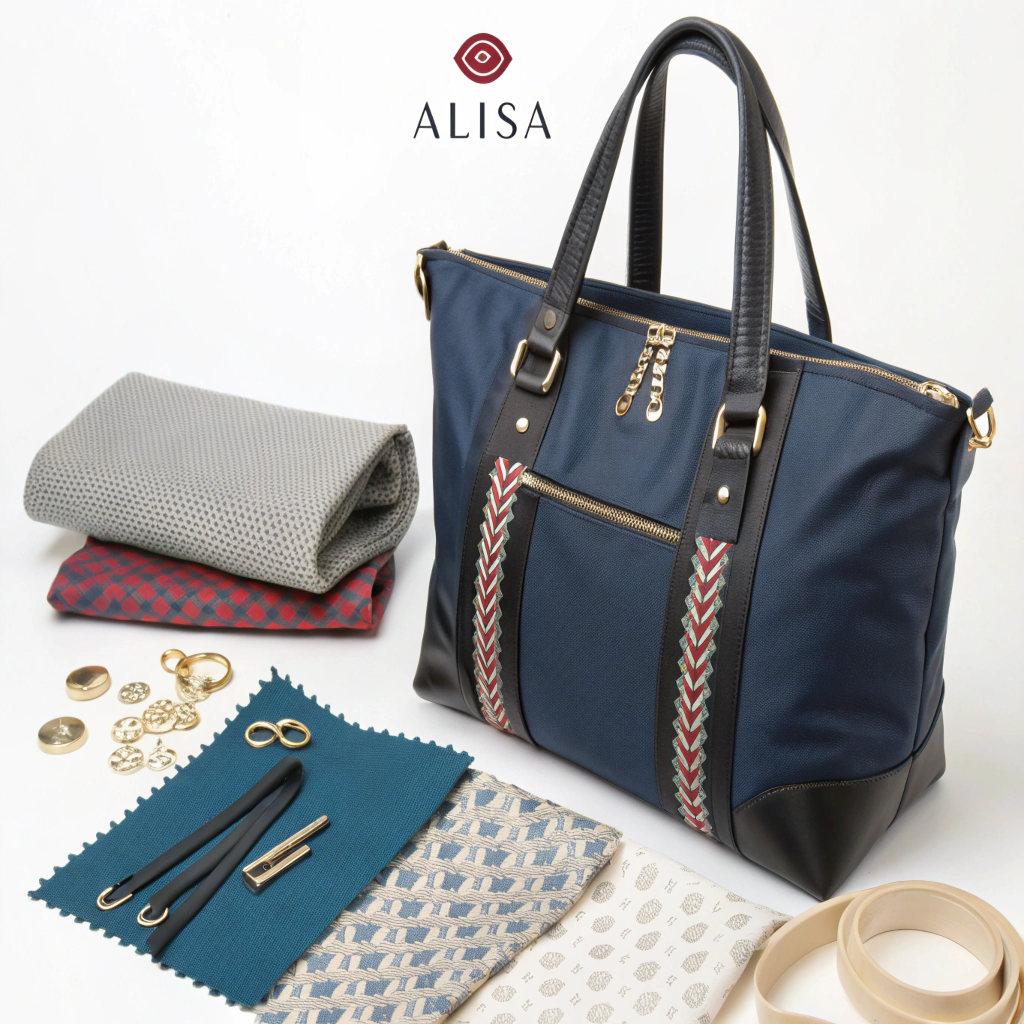
Let's walk through Alisa's project. Her brand is built on natural ingredients and sustainable luxury.
- Logo: She wanted a subtle, elegant look. We ruled out bold screen printing. After seeing samples, she chose a tasteful debossed logo on a small PU leather patch sewn onto the front.
- Material: Sustainability was key. We presented several options, and she fell in love with a high-quality RPET canvas made from recycled plastic bottles. It had a great texture and a powerful brand story.
- Hardware: To complement the minimalist logo and an earthy fabric, she chose a high-grade nylon zipper for reliability and a custom-designed matte black metal puller for a touch of modern luxury.
- Interior: Her products were lotions and oils, so a wipe-clean, waterproof lining was essential. We added two internal mesh pockets and a series of elastic loops to hold her bottles and brushes securely.
By carefully considering each step, Alisa created a toiletry bag that was a true extension of her brand. It was functional, beautiful, and sustainable—a product her customers were proud to use and display.
Ready to design your own? Partner with RIVTA today?
You now understand the process, but you need a reliable partner to help you execute it. You're looking for a factory that offers expertise, quality, and a commitment to sustainability.
Partnering with an experienced manufacturer like Rivta turns your vision into reality. We guide you through every step, from material sourcing to final quality control, ensuring a smooth process and a product that strengthens your brand.
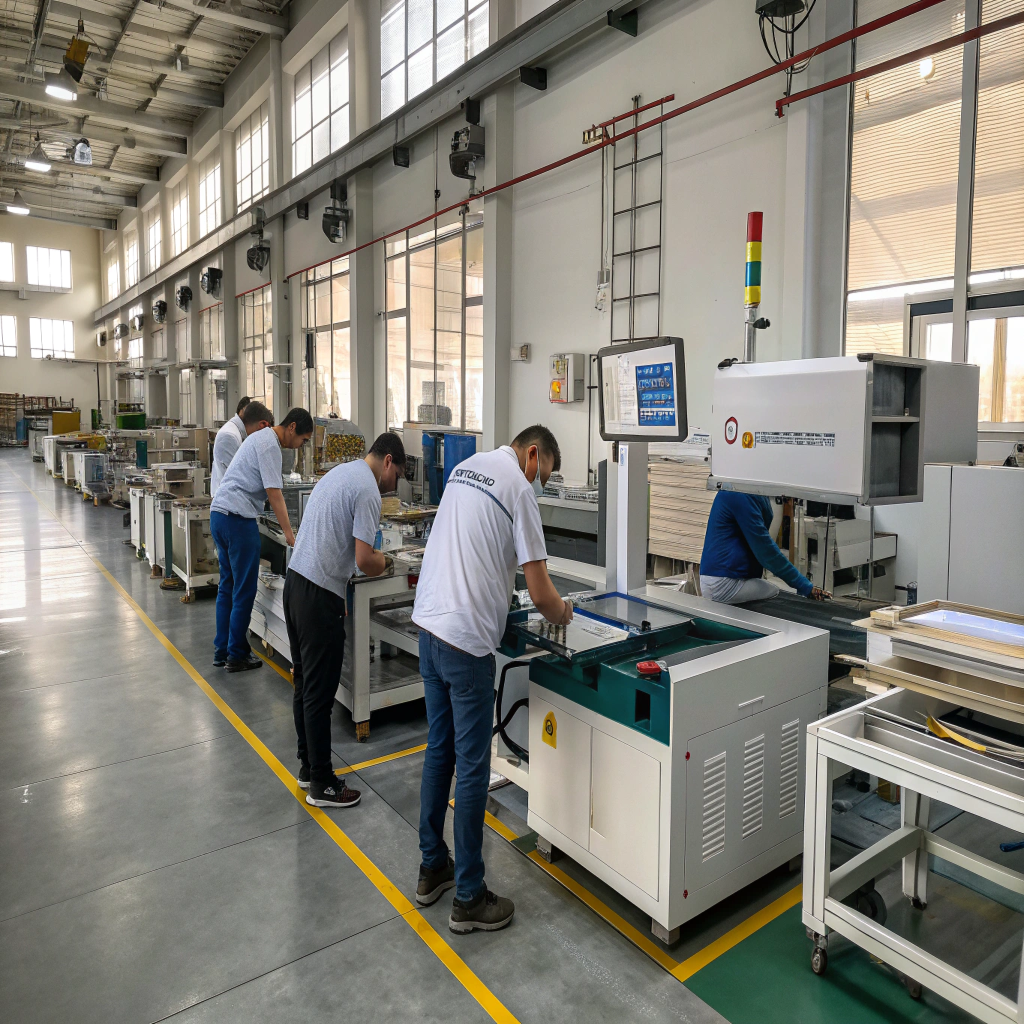
Creating the perfect custom toiletry bag is a partnership. Since 1990, we at Rivta have been that partner for brands around the world. We are more than just a factory; we are consultants and problem-solvers. Our mission, "Green Mission, Global Win-Win," means we are dedicated to finding sustainable solutions that also achieve your business goals. We provide expert guidance on materials, technical advice on design, and a commitment to impeccable quality control. We manage the entire process, from creating that first technical pack to ensuring the final product that arrives at your door is flawless. We handle the complexities of manufacturing so you can focus on what you do best: building your brand. Let our experience be your advantage.
Conclusion
Customizing a toiletry bag is a thoughtful process of aligning materials, branding, and function. With the right expert partner, you can navigate these steps to create a product your customers will truly love.

